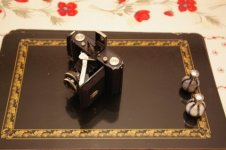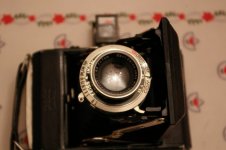sooner
Well-known
Hi Folks,
Sorry for this truly dumb question, but I received a beautiful Zeiss Ikon 520 folder yesterday and am currently shooting a test roll. But I can't figure out how to focus it, or specifically where to focus it. I mean, there are the two red dots to line up if you want the fail safe method, but if you want to focus at exactly 1.2 meters, for example, where do you line up the 1.2? And why does the lens turn in each direction only so far, so if you want 3 meters to infinity you turn one direction, but if you then want to focus at less than 3 meters you have to turn the lens all the way in the opposite direction. It's confusing, at least to me. Do you just line up the preferred distance with the opposite red dot? Is it that simple? Please confirm. Thanks.
Sorry for this truly dumb question, but I received a beautiful Zeiss Ikon 520 folder yesterday and am currently shooting a test roll. But I can't figure out how to focus it, or specifically where to focus it. I mean, there are the two red dots to line up if you want the fail safe method, but if you want to focus at exactly 1.2 meters, for example, where do you line up the 1.2? And why does the lens turn in each direction only so far, so if you want 3 meters to infinity you turn one direction, but if you then want to focus at less than 3 meters you have to turn the lens all the way in the opposite direction. It's confusing, at least to me. Do you just line up the preferred distance with the opposite red dot? Is it that simple? Please confirm. Thanks.








